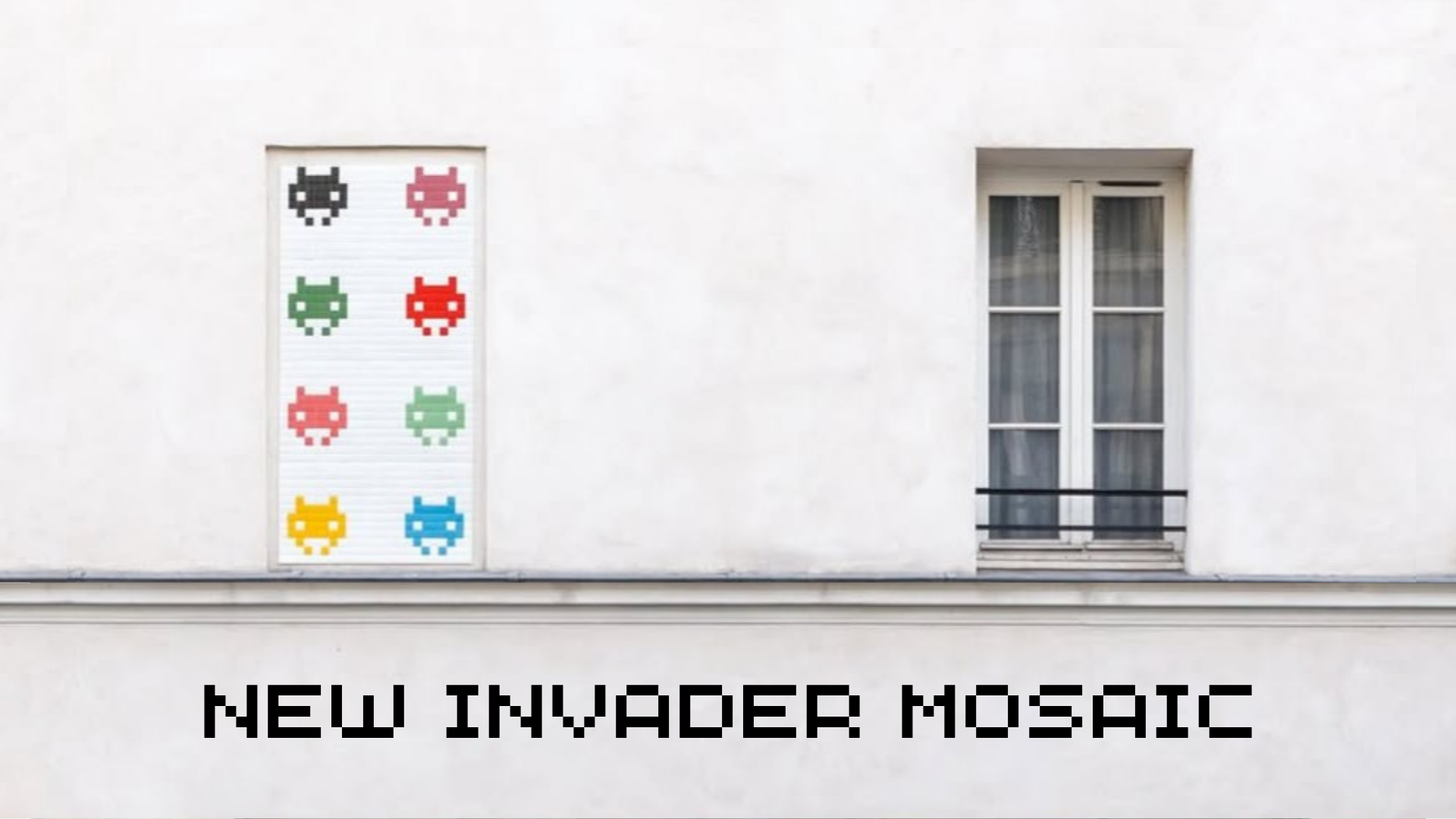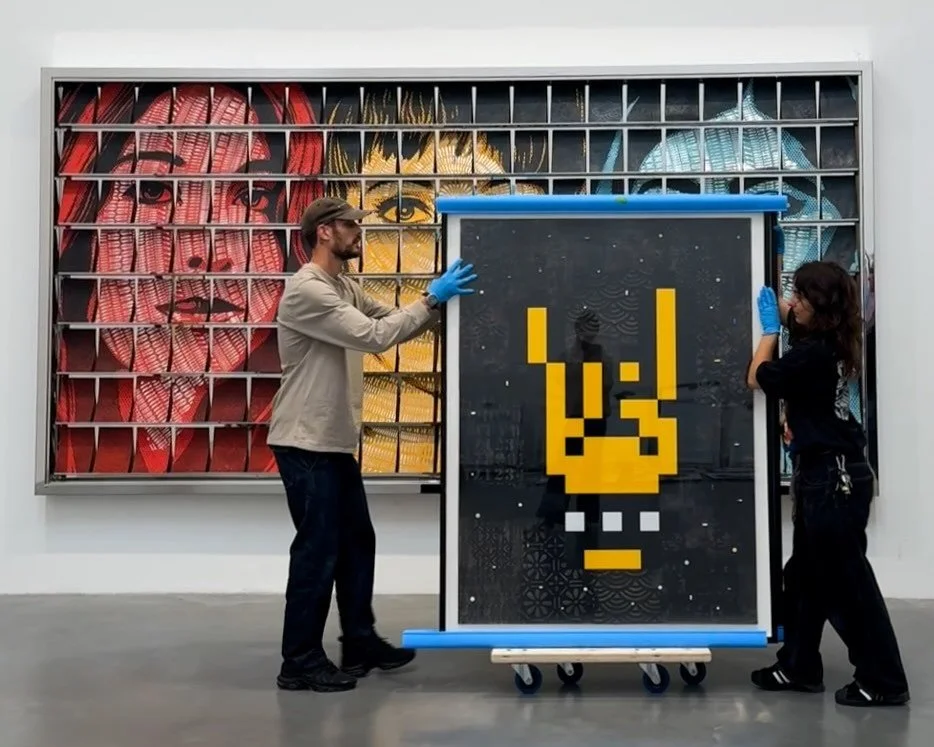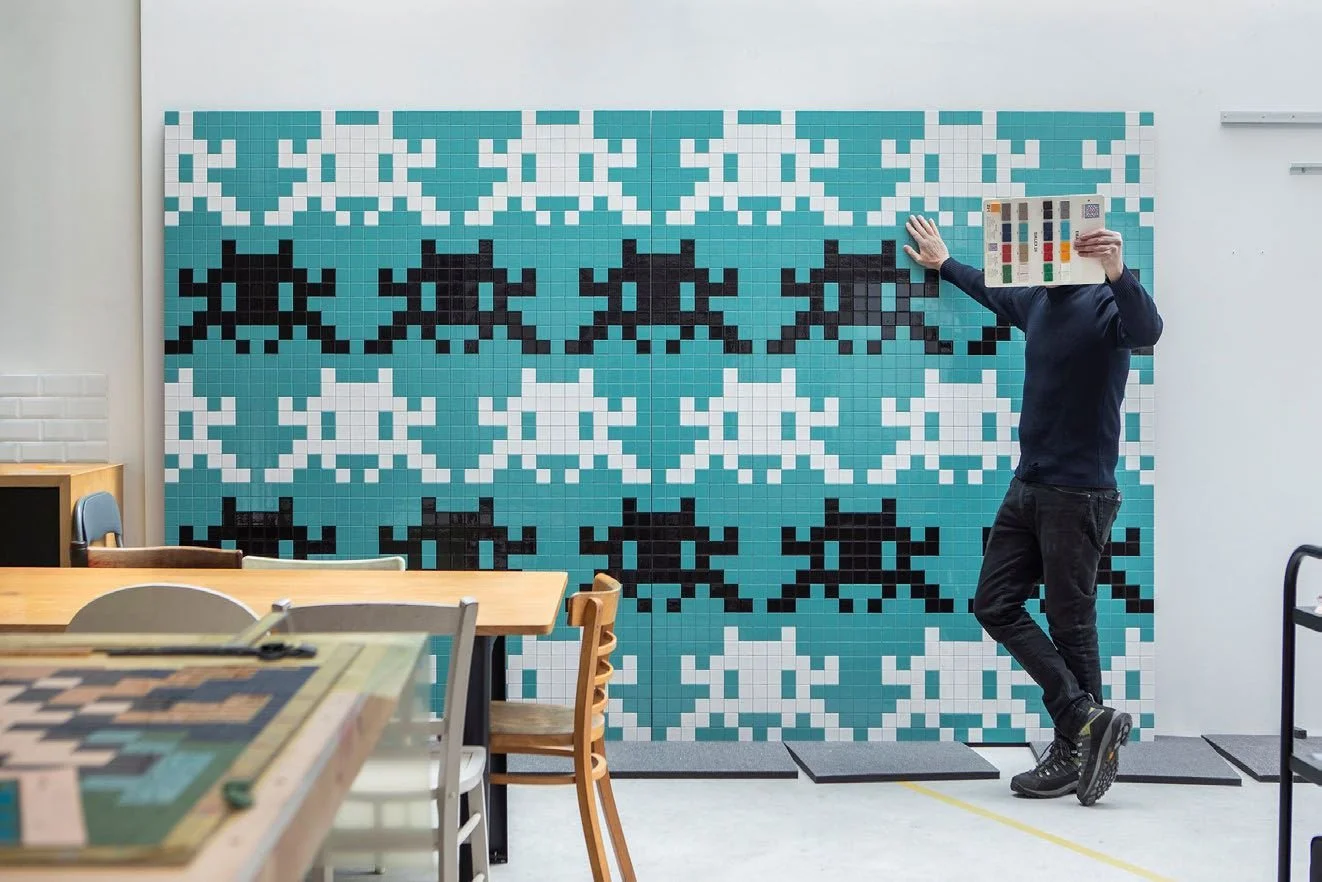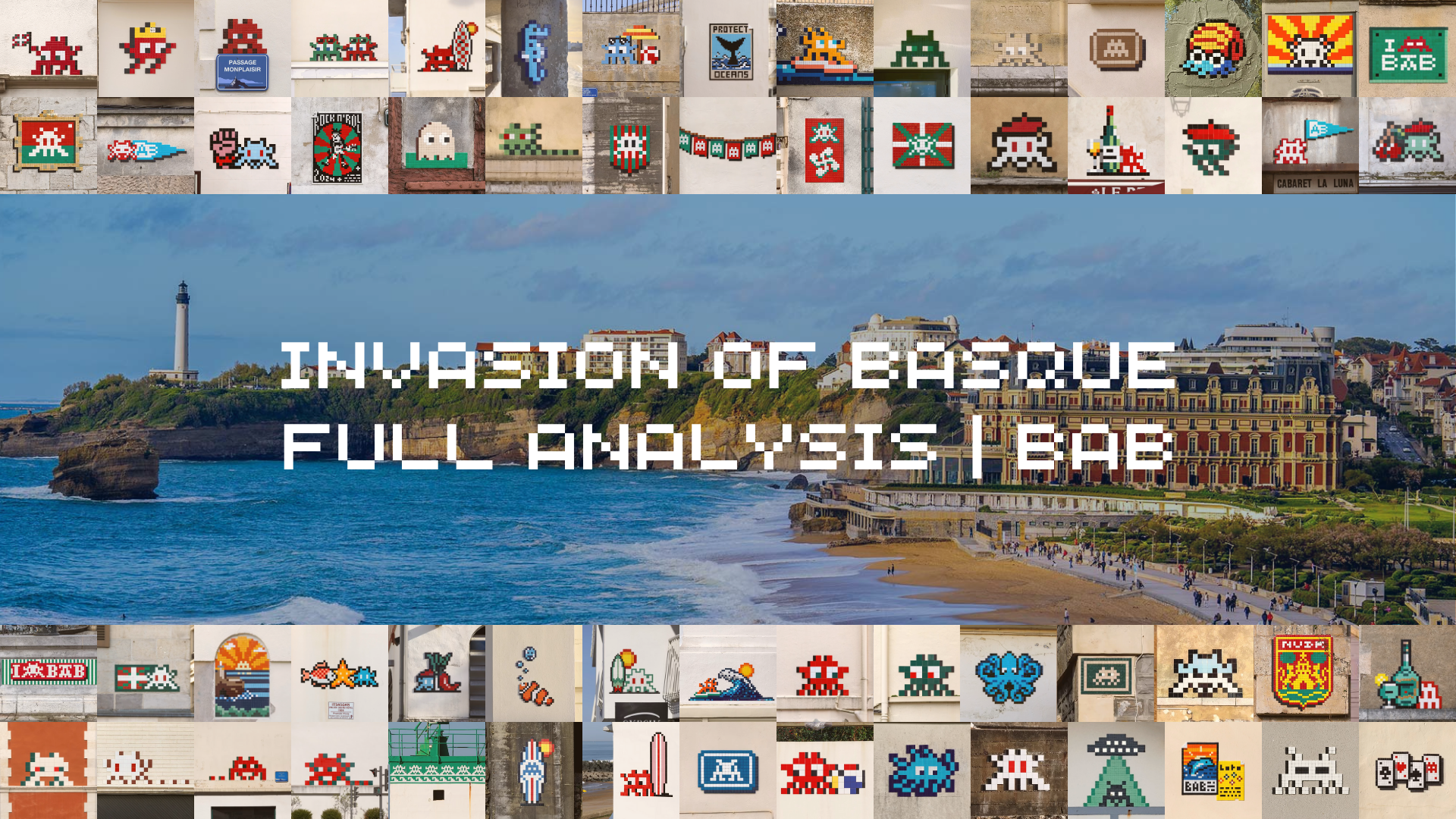The Change of Subjects in Invader’s Mosaics
Read more
Invader's work has evolved, especially the subjects he depicts in his mosaics, have changed over time, creating a global sensation with his distinctive pixelated mosaics inspired by classic video games. What led to this change, from nostalgic arcade games to modern pop culture?
The Change
Invader’s art, particularly Space Invaders, was affected by the culture of digital culture. This can be seen with his fictitious name based on the video game.
The beginning of Invader starts off simple with mosaics being a one-to-one copy of the game's iconic alien characters. Invader’s early works paid direct tributes or homage to the classic arcade game 1978 Space Invaders. The game, with its simple yet iconic pixelated characters, depicts their characters as aliens, which provided the perfect foundation and references for Invader’s mosaic art. These pieces were initially placed in public spaces in Paris, where Invader was born.
These installations quickly gained attention, transforming mundane urban environments into playful, interactive spaces. He successfully transformed urban landscapes into art galleries available to the public.
My creatures are now quite detached from the four original Taito creatures.
-Invader
Invader chose Space Invader for a reason. Firstly, it was the trend during his childhood, with Invader submerged in the gaming experiences. Secondly, this is a way for him to combine reality and the digital world.
As Invader's work gained popularity and his reputation grew, he began diversifying his mosaics' characters and started incorporating characters from other classic video games. While his early works prominently featured characters from the original Space Invaders game, his subjects have evolved to include a wide range of video game icons over the years. Beyond the original Space Invaders aliens, he incorporated characters from other classic games such as Pac-Man, Super Mario, and even contemporary pop culture icons. This expansion allowed his art to reach a wider audience and connect with fans of various genres.
My universe is full of other references that complete my repertoire.
Classics
Pac-man
Following his success with Space Invaders, Invader began to introduce characters from other beloved video games. One of the most prominent and recurring themes in his art is Pac-Man and his ghost adversaries. It is one of the first additions Invader incorporated into his art, almost immediately after he started invading cities. As one of the most famous video games of all time, Pac-Man naturally became a significant addition to his art. The game's simple yet instantly recognizable characters made it an ideal choice for Invader's mosaic style. These characters, with their easily recognizable shapes and colors, became popular subjects in his mosaics.
HK_116
HK_115
One of the fascinating aspects of Invader's work is how he integrates his mosaics into their surroundings. With Pac-Man, he often places the character in locations that mimic the layout of the game. For example in HK_115 and HK_116, ghosts in Pac-Man are positioned at the side of a building, seemingly going after money bags behind the wall.
While sticking to the original designs of Pac-Man and the ghosts, Invader has also experimented with variations. Characters are depicted in different colors or patterns on some occasions, adding a unique twist to the familiar icons.
LDN_126
LDN_127
Original Color Scheme
In the above example of LDN_126 and LDN_127, Invader hasn’t used the average color scheme of ghosts of red, pink, cyan, and orange. Instead, he uses a mix-match of colors in a diagonal pattern. This is referencing the album cover of Aladdin Sane by David Bowie, with the lightning-shaped pattern on his face.
In some instances, Invader has adapted his Pac-Man characters to reflect and show the local culture or environment. This cultural integration not only pays homage to the host city but also makes the artwork more relatable to its residents.
Take the above mosaics of Pac-Man as an example. David Bowie was born in London, where the two mosaics are located. Invader is creating his pieces dedicated to that location, thus referencing the London artist, David Bowie. Is it a coincidence? I don’t think so.
Super Mario Bros
The world of Super Mario Bros with its rich cast of characters and enduring popularity, offered Invader a rich variety of characters to explore. Mario, Luigi, mushrooms, and Goombas began appearing in his works, adding a sense of nostalgia and playfulness to his pieces.
He often places characters in locations that mimic the game's levels. Invader's genius lies in how he integrates his mosaics into their surroundings.
NY_111
In the case of NY_111, Mario is positioned in his iconic jumping pose under a metallic pipe. This is referencing the green pipes that lead Mario to different locations in the Super Mario Bros video game series. Mario in this case is seemingly entering or leaving the real-life pipe.
While Invader remains true to the original designs of the Super Mario Bros characters, he does sometimes add variations.
PA_1461
Dr. Mario is another official persona of Mario in the Dr. Mario series. With totally different color schemes and outfits, it adds a fresh twist to the familiar icons of the long-sleeved red shirt and a pair of blue overalls.
Classic video games hold a special place in the hearts of many. By incorporating these characters into his art, Invader taps into a sense of nostalgia while also celebrating the enduring appeal of these classic icons. The incorporation of iconic classics into Invader's art represents a significant evolution in his approach to urban mosaics.
From the early days of simple character depictions to the more complex and interactive installations seen today, classic characters remain a central theme in Invader's body of work. As Invader continues to push the boundaries of his art, it will be exciting to see how he further develops this iconic subject in new and innovative ways.
pop culture
Superheroes
PA_1040
PA_1261
More recent Invader mosaics often feature superheroes. Capturing Spider-Man in an action-packed pose, or perhaps emphasizing Batman hero's iconic status and his association with strength and darkness.
As mentioned, these installations are strategically placed to complement the surrounding architecture, creating a sense of movement and excitement. Invader often places them at locations that fit the character of his mosaics, such as Spider-Man swinging between buildings and dangling from the walls; and Batman on high buildings near civic landmarks to symbolize his role as a protector and a dark knight.
The choice of superheroes as a subject appeals to a broad audience. From comic book enthusiasts to casual fans, Invader taps into the universal appeal of the recognizable bold superheroes. By situating superheroes in urban environments, Invader promotes the everlasting legacy of iconic superheroes to the real world and creates a virtual dialogue between imagination and reality. Reinforcing the themes of heroism and optimism, and making it seem as though superheroes are patrolling the streets, ready to leap into action.
Star Wars
Invader has featured the Star Wars franchise in his urban art because it offers a rich array of characters. From iconic figures like Darth Vader and Luke Skywalker to beloved droids like R2-D2 and C-3PO, these mosaics bring the epic space saga to life in urban settings.
LDN_132
The storyline of Star Wars fits Invader’s Global Space Invasion project. With all the creatures from outer space living in the franchise of Star Wars, they suit perfectly as one of the invaders.
This blend of sci-fi fantasy with everyday life captures viewers' imagination and underscores Star Wars’ timeless appeal.
4000 Exhibition
4000 is a solo exhibition celebrating the first 4000 space invaders installed worldwide, which took place at Over the Influence gallery in Paris from December 10, 2022, to January 22, 2023.
One of the pieces shows a stormtrooper guarding the doorway, matching the background of them being soldiers and should be for security and protection.
Check out more info at Over the Influence
Others
Sonic the Hedgehog is recorded at least once as a subject in Invader's work. Captured in his vibrant, fast-paced glory depicts the iconic pose of Sonic with one hand tucked in and a thumbs-up, placed in a location requiring looking up.
PA_1084
The Teenage Mutant Ninja Turtles is another subject seen in Invader's art. Characters are depicted in their classic poses. For example, a mosaic is found on a wall on the second floor of a building near the window frame, evoking the streets where the turtles operate and rest. Not only does Invader create enjoyable art, but it also adds a bit of joy and heroism to society.
NY_163
Invader has also tapped into the cultural phenomenon of The Simpsons, featuring characters like Homer Simpson in his mosaics. These pieces often capture the humorous and satirical spirit of the show, placing the characters in amusing situations that reflect their personalities.
PA_1206
Apart from these three examples, there are various pop culture references solely in Paris. There are over 1500 invaders in Paris, so it’s no wonder there are mosaics exclusive in Invader’s birthplace.


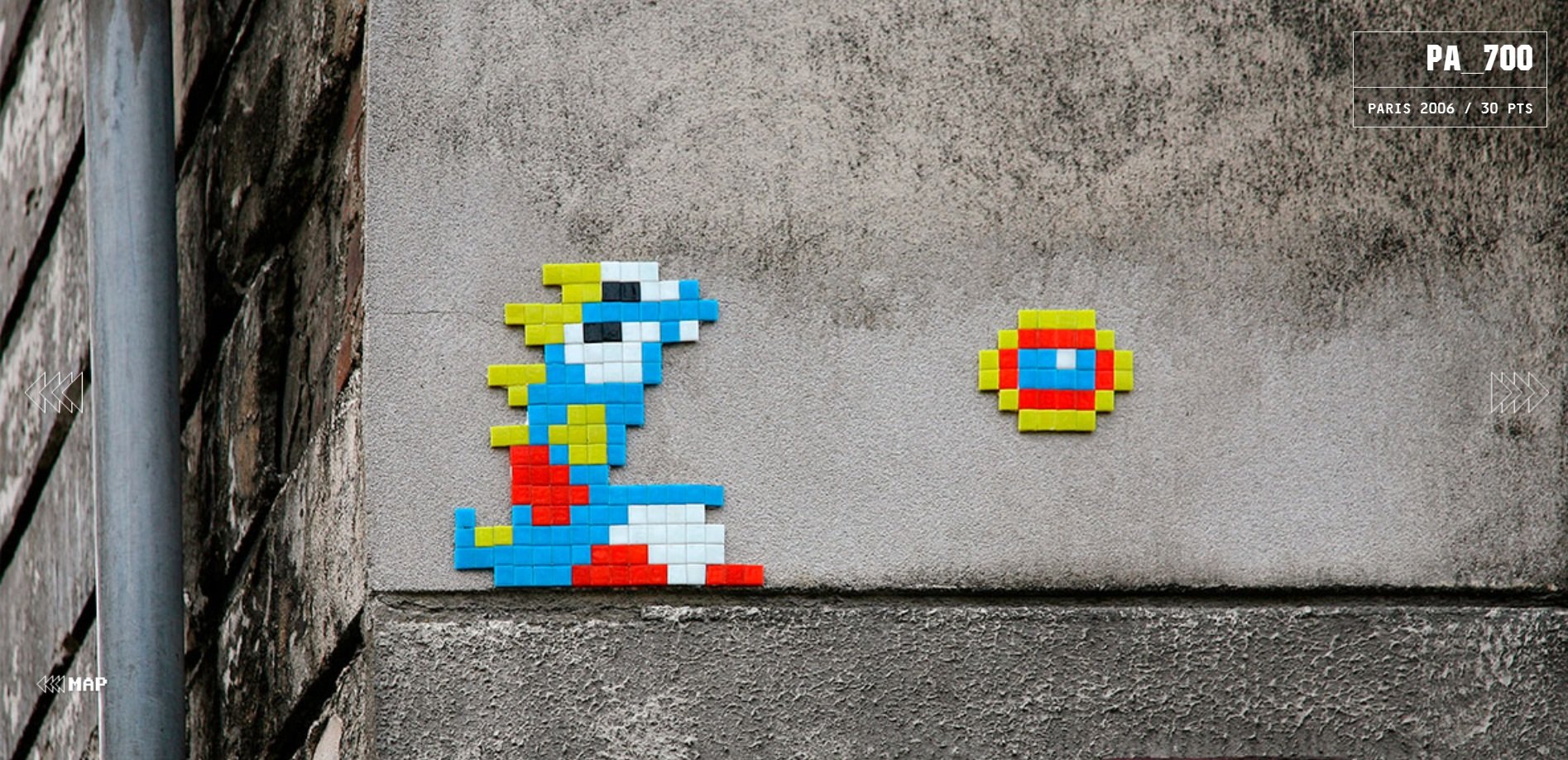



Invader's diverse subject matter reflects his deep engagement with popular culture. Each character he selects brings a rich history and a set of connotations that enrich the urban environment and invite viewers to rediscover familiar icons in unexpected places. Invader's ability to reinterpret a diverse range of pop culture icons—from video games and cartoons to comic books and movies—within the context of urban art demonstrates his versatility and deep connection to street culture.
Conclusion
By continuously updating his subjects, Invader keeps his work relevant and engaging. His mosaics encourage public interaction, turning city streets into spaces where people can connect over shared cultural references from both past and present video games.
By drawing on a wide range of video game icons, Invader creates works that resonate with diverse audiences and celebrate the enduring appeal of gaming culture. The evolution of subjects in Invader's art, from the original Space Invaders to characters from modern video games, reflects his ability to adapt and innovate while staying true to his roots. As video games continue to evolve, it will be exciting to see how Invader's art evolves with them, always at the intersection of nostalgia and modernity.
From simple tributes to classic video games to a complex, multifaceted project that spans the globe, and through diversification of characters, cultural commentary, and interactive experiences, Invader has created a dynamic body of work that continues to captivate and inspire. As his global invasion progresses, it will be exciting to see how Invader further explores and expands his artistic vision.
All Rights Reserved
~
We do not own any copyrights to the photos used
~
All Rights Reserved ~ We do not own any copyrights to the photos used ~
Table of Contents
The ChangeClassics
-pac-man
-Super Mario brospop culture
-superheroes
-Star Wars
-OthersConclusion


